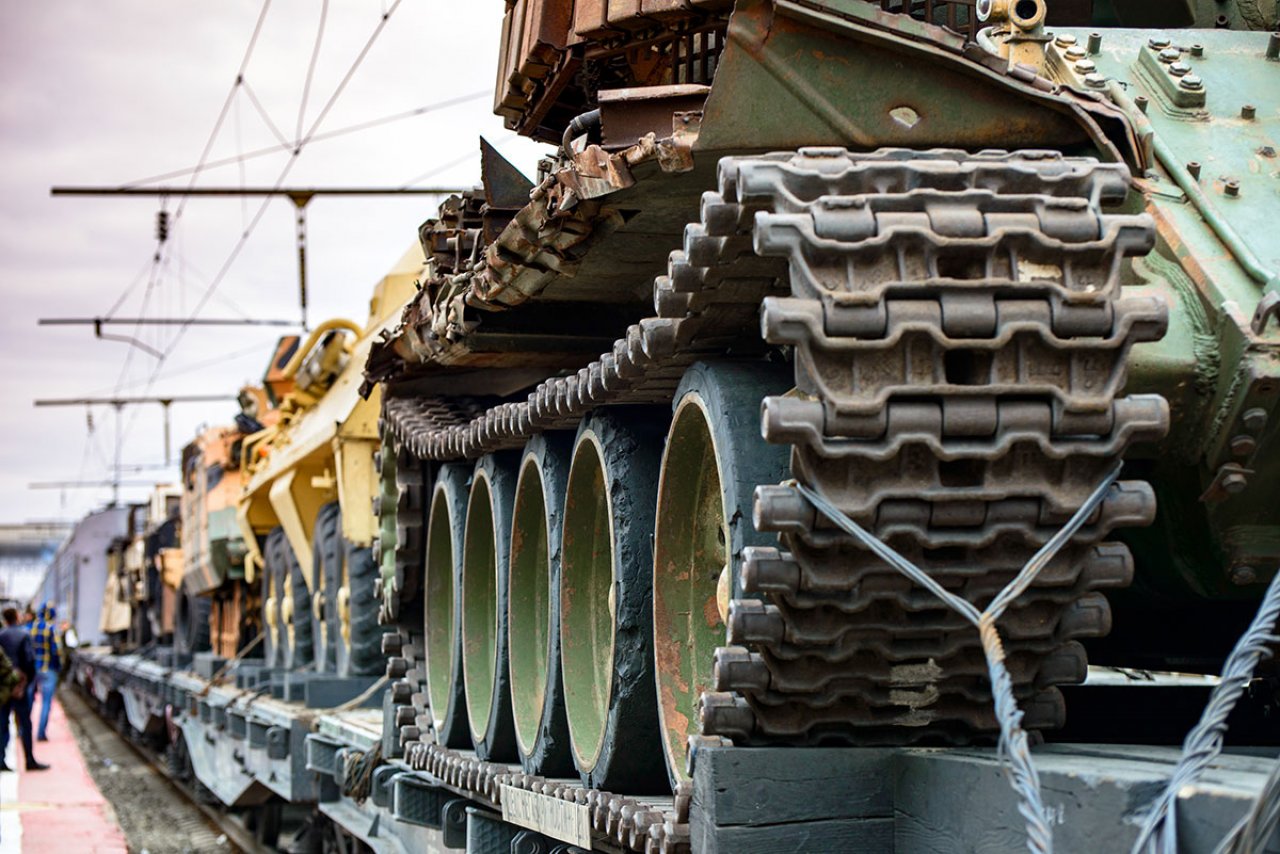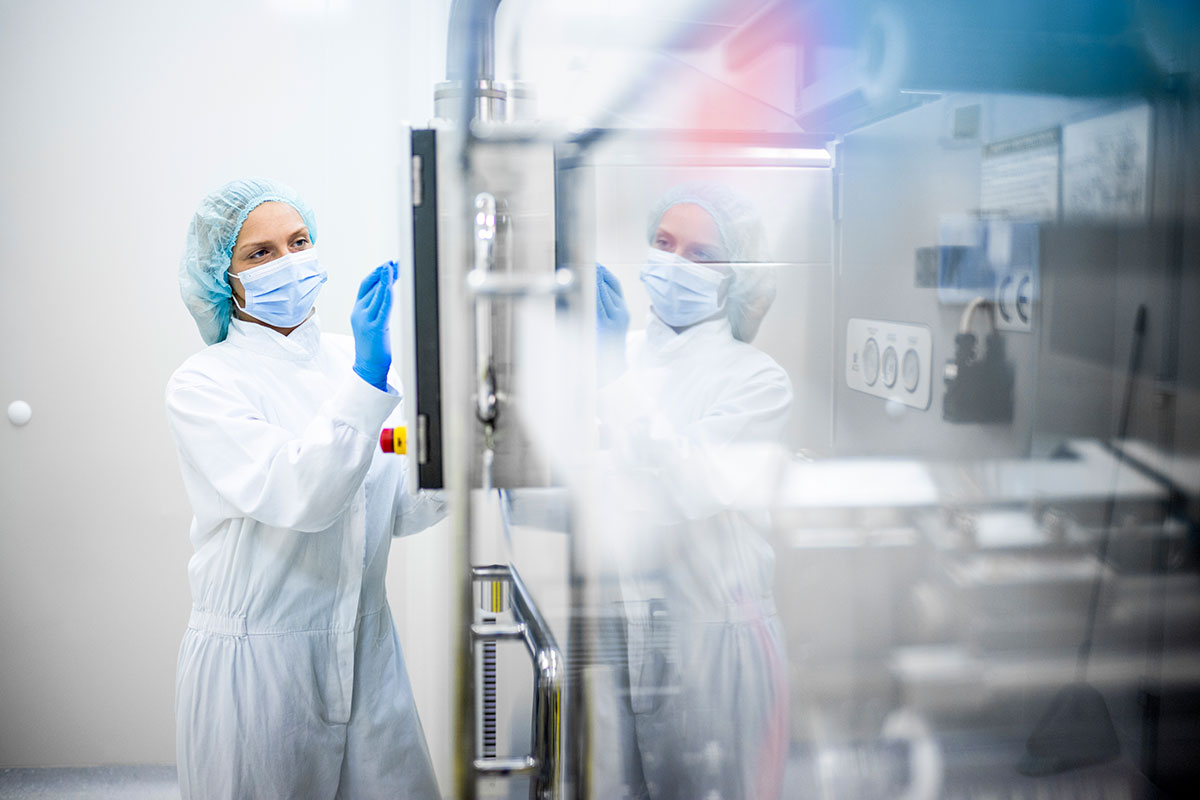Understanding the Influence of Industrial Complexes on Society and Economy

Rendergeek
June 12th, 2024

Industrial complexes are not just hubs of production; they are powerhouses that redefine economies and societies. When exploring industrial complexes, one discovers a world where industries and politics converge, influencing everything from military strategies to healthcare policies. This article provides a straightforward glimpse into how these networks operate and exert control, promising an in-depth look without overwhelming you with complex terminology.
Exploring the Term 'Industrial Complex'
When one speaks of an “industrial complex,” it conjures images of sprawling factories and intricate networks of power and production. Yet, this term, rich in nuance and history, extends far beyond the confines of industry alone. This term serves as the basis for discussions on how sectors as varied as military, nonprofit, academic, and medical, interplay with societal and economic frameworks. Grasping this concept facilitates the public’s active engagement with the world’s structure, preventing them from being sidelined by jargon.
The lexicon of industrial complexes is ever-evolving, a mirror to the shifting tides of societal needs and economic currents. Rather than just a descriptor, this term functions as a lens that helps us perceive the widespread impacts across social and economic realms, offering a glimpse into the forces that mold our everyday lives.
Origins of the Industrial Complex Concept
It was President Dwight D. Eisenhower who first introduced the world to the “military industrial complex,” a term that has since echoed through the corridors of power. During his farewell address, this seasoned warrior cautioned against the burgeoning alliance between a nation’s armed forces and its arms industry—a union that could potentially skew policy and endanger democracy. Eisenhower’s warning about the immense military establishment and the large arms industry it spawned was prophetic, highlighting the potential dangers of such a powerful nexus.
This historical turning point triggered a broad awareness of the intricate relationship between military power and industrial production, influencing national defense strategies and global politics ever since. Eisenhower’s insight underscored the necessity for watchfulness and equilibrium in the relationship between the military and its supplying industry.
Broadening the Scope
The term “industrial complex” has since burgeoned, reaching into corners of society not traditionally associated with the smokestacks of industry. Take, for instance, the “prison industrial complex,” a chilling marriage of private enterprise and governmental policies that, some argue, values profits over the rehabilitation of individuals. Or consider the “academic industrial complex,” where the quest for knowledge intertwines with economic incentives, potentially skewing the trajectory of research and education.
These examples illuminate the profound influence these complexes exert on society and the economy, shaping the way the general public perceives and interacts with these systems. The terminology we employ to characterize these phenomena is crucial, as it sustains the connection between the complexities of their operations and the real-world experiences of the people involved.
The Military-Industrial Complex: A Deep Dive
 Image by Phantom1311, iStock
Image by Phantom1311, iStock
Envision a network of institutions and individuals, all intricately linked to the business of war—a web that describes the term military industrial complex. This complex symbolizes a relationship riddled with worries about the defense firms’ imbalanced influence on government and national security—a scenario in which the metaphorical merchants of death might manipulate the state’s institutions. The military-industrial complex remains prominent, with the U.S. government signing a colossal defense spending bill in 2023 that underscores its enduring impact.
Leading this charge are the private military contractors like Boeing and Lockheed Martin, whose roles within the complex are pivotal, often blurring the lines between federal government administration and weapons production. This consolidation of power raises questions about the degree to which an industry should influence national military strategies and spending.
From World Wars to Modern-Day Defense
U.S. military-industrial complex’s narrative is a historical tapestry, extending from World War II’s arsenal of democracy to the Cold War’s tense standoffs. It was during the latter that the U.S. saw a significant bolstering of its military services and defense industry, a response to the perceived threat from the Soviet Union. Eisenhower’s cautionary words about the military-industrial complex spotlighted this burgeoning power during his farewell address, urging the nation to be wary of its potential to dominate the social, political, and economic arenas.
Decades later, the shadow of the military-industrial complex looms large, with the United States’ military expenditure dwarfing that of the next 13 countries combined. It is a testament to the enduring nature of this complex and the pivotal role it plays in shaping not just military policy but the very concept of national defense.
The Iron Triangle
At the heart of the military-industrial complex lies the “iron triangle,” an alliance that binds government officials, legislators, and military-industrial firms in a mutually beneficial relationship. Eisenhower, perceiving the military-industrial complex as a necessary but potentially perilous entity, used his military leadership credibility to spotlight the influence of this powerful interest group. This intricate system has fueled debates about the ethics of such cozy relationships and their implications for the democratic process.
The iron triangle theory suggests a cyclical exchange where each corner bolsters the others, potentially leading to conflicts of interest and a skewing of priorities away from the broader interests of society. It raises a critical question: how can a nation ensure that its defense industry supports national security without compromising the integrity of its political and military institutions?
Nonprofit Sector Under the Microscope
The nonprofit sector, often perceived as a bastion of altruism, is not insulated from the influence of industrial complexes. The nonprofit industrial complex, a term that may seem contradictory, captures the essence of this sector’s entanglement with corporate and state interests—a dynamic that can mute the voices of those most affected by inequity. This complex shapes the nonprofit world, compelling organizations to navigate a course that often aligns with the agendas of the wealthy and powerful, rather than the needs of the grassroots.
In this process, nonprofits might unintentionally promote strategies tackling inequity at the individual level while overlooking the systemic structures fostering societal disparities. Yet, there are organizations that resist the pull of the nonprofit industrial complex, either by necessity or through a conscious decision to champion change from the ground up, taking cues from movements built by the communities themselves, where an organization formed with a different approach.
Power Dynamics in Philanthropy
Power imbalances abound in the field of philanthropy, shaped by laws and practices that give private foundations significant sway over the nonprofits they finance. These foundations, bound by a legal mandate to distribute a portion of their assets annually and maintain their tax exempt status, wield their financial clout to steer nonprofit priorities, sometimes at odds with the societal changes they claim to champion. The stark contrast in financial security between black-led and white-led organizations further underscores the inequities within the philanthropic landscape, limiting the autonomy and impact of marginalized groups.
Even lean funders, constrained by their own resource limitations, face hurdles akin to those of their nonprofit counterparts, affecting their ability to effect meaningful change. This is a complex interplay of intentions and results, with financial flows often setting the pace of progress.
Grassroots vs. Top-Down Funding
Amidst this backdrop of imbalance sits the Community-Centric Fundraising framework, a beacon of hope for a more equitable approach to nonprofit funding. This framework challenges the status quo by fostering dialogue and inclusivity, engaging donors in conversations about wealth inequity, and reimagining the relationship between funders and recipients. It represents a shift from a top-down model to one that empowers communities to define their priorities and assert their strategies for change.
The tension between grassroots movements and the expectations of traditional funders is palpable, as nonprofits often find themselves contorting to fit the mould of funding requirements. Yet, through frameworks like Community-Centric Fundraising, there is a possibility for more balanced relationships that honor the voices and needs of those at the grassroots, marking a potential shift in the power dynamics of philanthropy.
Decoding the Medical Industrial Complex
 Image by Extreme Media, iStock
Image by Extreme Media, iStock
The phrase “Medical Industrial Complex” (MIC) may not carry the same weight as its military equivalent, but its implications are equally significant. Dominated by for-profit institutions, the MIC paints a portrait of healthcare where profits often eclipse the sanctity of patient care. The complex’s presence is felt in the markets set for treatments and services, where the price tags reflect a system deeply intertwined with the pursuit of profit.
This profit-oriented model poses ethical conundrums, as financial interests could jeopardize patient care quality and the integrity of medical research and education. It exposes a healthcare system grappling with the overuse of services, an overreliance on technological solutions, and an undue influence on health policy, all of which are symptoms of a complex that prioritizes economic gain over patient well-being.
Healthcare or Wealthcare?
The MIC’s emphasis on financial incentives casts a long shadow over the healthcare system, fostering conflicts of interest that can undermine the foundational principles of medicine. A system where wealth determines access to care risks leaving the most vulnerable behind, raising questions about the universality of healthcare in a profit-oriented market. The utilization of publicly funded research by for-profit healthcare entities to develop lucrative treatments further complicates the moral landscape of the MIC.
Therapies that promise greater profits are often favored over less lucrative but essential treatments, skewing the balance between patient needs and medical advancements. It is a delicate balance between nurturing innovation and ensuring that advances in healthcare serve the many rather than the moneyed few.
Pharmaceutical Ties
The complex bonds linking pharmaceutical companies and medical research form a key aspect of the Medical Industrial Complex. These relationships can be a double-edged sword, fueling advancements in patient treatment while also raising the specter of biased research outcomes. The entanglement of interests related to drug development and healthcare innovation needs careful scrutiny to prevent compromise of care quality.
When pharmaceutical companies influence the direction of medical research, there is a danger that negative results may be suppressed, skewing the body of scientific evidence that guides patient care. It is a fine line to walk, ensuring that the symbiotic relationship between research and industry yields benefits for patients without sacrificing the integrity of the scientific method.
Visualizing Industrial Complexes
 Image by metamorworks, iStock
Image by metamorworks, iStock
Industrial visualization provides a window into the complex world of machinery, offering a glimpse into the inner workings of the entities that drive our economy. From the colossal turbines of power plants to the intricate systems of coastal complexes, these visual representations help demystify the industrial landscape. The very structure of our modern industry can be captured in these visualizations, providing a tangible understanding of otherwise abstract concepts.
RenderGeek’s approach in this field could herald change by employing innovative techniques to depict the evolution and impact of industrial complexes. Similar to how other fields leverage data representation, industrial visualization can offer a new perspective on the interconnectedness and dynamics within various sectors.
RenderGeek's Perspective
RenderGeek, a pioneer in the visualization field, could gain insights from innovative methods employed in various areas to represent complex data. By adapting techniques like Google’s Music Timeline visualization, they could trace the historical development and influence of industrial complexes, creating a visual narrative that captures the ebb and flow of these powerful entities. Moreover, utilizing 3D-style mapping like Time magazine’s population density displays could illustrate the concentration of industrial complexes in various regions, offering a unique lens through which to view their scope and impact.
This approach not only supports the idea of making complex data accessible but also serves as an analysis tool, enabling a deeper understanding of the forces that shape our industrial and economic landscapes. RenderGeek’s perspective could thus revolutionize the way we visualize and comprehend the intricate networks that underpin our society.
Industrial Complexes and Global Economics
Industrial complexes have become an integral part of political and economic systems, forming a web of profit-oriented interests that occasionally conflict with societal and individual well-being. These complexes, whether they be military, medical, or nonprofit, highlight the inherent conflict of interest between institutional goals and the financial agendas of the corporations and government agencies involved. With global military spending reaching a staggering $2,240 billion in 2022, the economic weight of these entities is undeniable.
The nonprofit sector’s entrenchment within an industrial complex serves to reinforce the existing world order, demonstrating the capacity of these complexes to steer economic policies and maintain the status quo. It is a testament to the socioeconomic concept that these structures not only exist within nations but also exert profound influence on the global stage.
The Global Network of Industries
The term ‘global industrial complex’ encapsulates the vast network of industries that transcend national boundaries, influencing the ebb and flow of the global economy. The Global Network of Companies, for example, exemplifies the reach of such networks by setting industry standards and providing specialized training, thus shaping economic trends and fostering connections between businesses around the world. These institutions are not merely economic entities but also play cultural and political roles, contributing to a system where industries are interconnected across continents and cultures.
This interconnectedness is a defining feature of modern global economics, where industries collaborate and compete on an international stage. The impact of these global industrial complexes on local economies and individual livelihoods is profound, raising important questions about the balance of power and the distribution of resources in an increasingly interconnected world.
Industry Influence on Politics
The interplay between industry and politics is a dance of power and influence that can have far-reaching consequences for a nation. Some key aspects of this interplay include:
Military forces, reliant on government funding, become ensnared in a cycle of lobbying by military-related ministries and private weapons manufacturers.
Legislators often align with the interests of their campaign contributors, which can include defense contractors.
Industrial professionals further entrench their positions by hiring former defense officials and pushing for legislation that benefits their business needs.
This can result in securing government contracts and gaining insider information in the process.
This trend of unwarranted influence peddling, where business interests frequently overshadow societal well-being in government decisions, reflects the undue influence that industrial complexes can wield on politics. Critics argue that such entwinement undermines legislation intended to serve the broader society, posing a conflict of interest that challenges the democratic ethos of serving the public good. It is a dynamic that prompts the question of how nations can safeguard the integrity of their political systems from the overbearing clout of industrial complexes.
Summary
In traversing the terrain of industrial complexes, we have uncovered a landscape where power, profit, and policy intertwine to shape the pillars of our society and economy. From the military establishment’s might to the subtle machinations within the nonprofit sector, and the profit-centric model of healthcare, these entities hold sway over aspects of life that touch each of us. As we pull back the veil on these complexes, we are reminded of the importance of vigilance and the pursuit of balance, ensuring that progress and prosperity are not achieved at the expense of equity and integrity.
Our location
Turning Industrial Visions into Clear Imagery
2026 © Rendergeek. All Rights reserved. |Sitemap|Privacy Notice